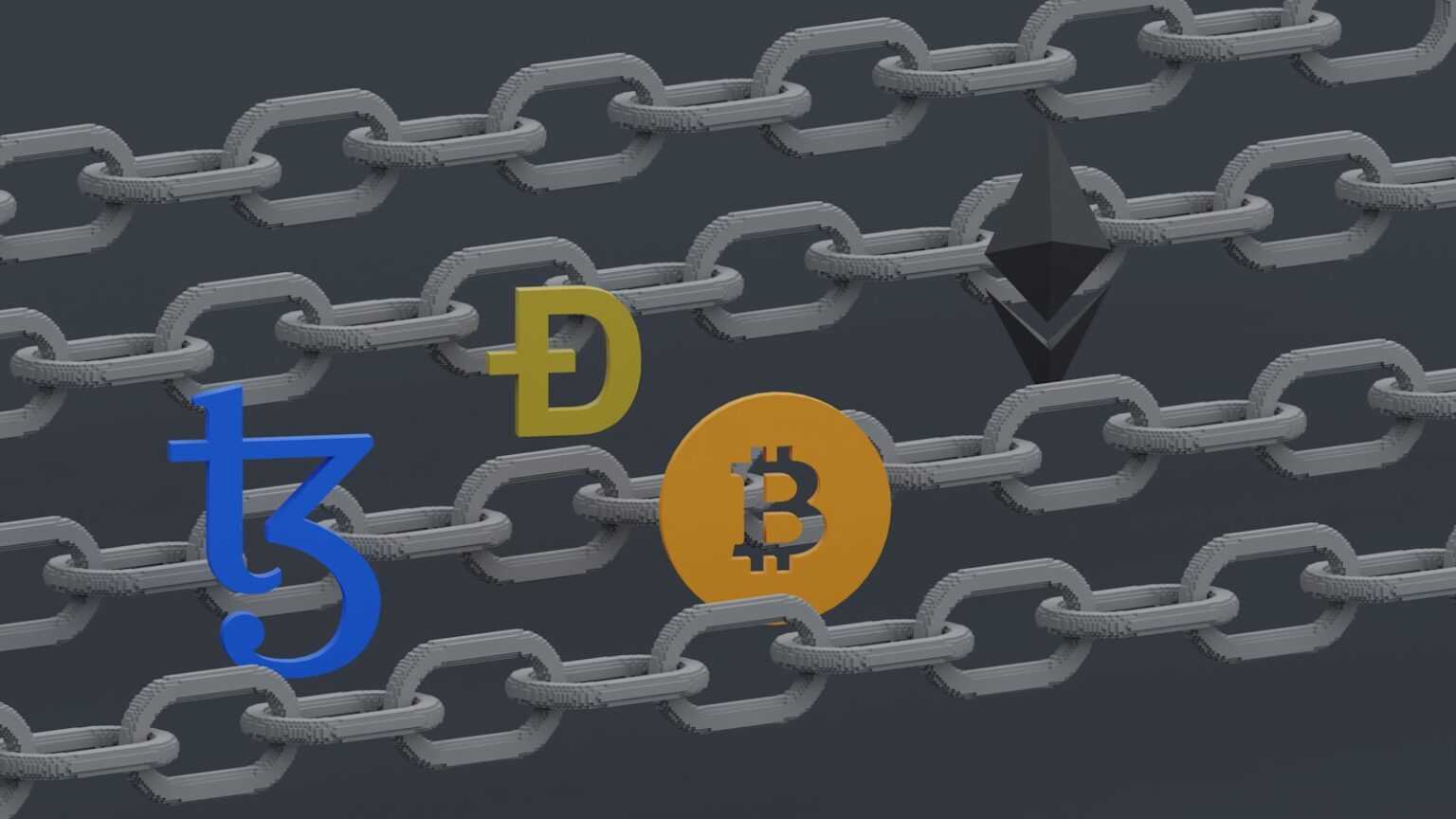Harnessing blockchain advancements requires targeted experimentation with decentralized protocols to evaluate scalability and security improvements. Current research highlights layer-2 solutions as promising avenues for reducing transaction latency while maintaining trustlessness. Implementing these technologies involves iterative testing of consensus algorithms under varying network conditions, encouraging hands-on validation to optimize throughput without compromising decentralization.
Innovation in tokenomics demands precise modeling of incentive structures to align stakeholder behavior with system sustainability. Experimental frameworks incorporating game theory can simulate participant interactions, revealing equilibrium states that support long-term ecosystem growth. Researchers should replicate these models with diverse parameter sets to identify robust configurations adaptable to evolving market dynamics.
Future applications extend beyond financial instruments, encompassing programmable assets and autonomous organizations governed by transparent codebases. Investigating cross-chain interoperability protocols offers pathways to integrate heterogeneous networks, enhancing composability and resource sharing. Systematic trials measuring latency, throughput, and fault tolerance across multi-ledger environments will sharpen understanding of practical deployment challenges.
Digital discovery: exploring new crypto frontiers
Identifying emergent patterns within decentralized ledger technologies requires systematic observation and iterative experimentation. To analyze scalability solutions such as layer-2 protocols, one must assess throughput increases alongside latency trade-offs, exemplified by rollups like Optimistic Rollups and zk-Rollups which offer distinct consensus validation mechanisms. Monitoring metrics including transaction finality times and gas fee reductions allows for empirical evaluation of these enhancements.
Examining consensus algorithm innovations reveals a shift from Proof-of-Work to more energy-efficient models like Proof-of-Stake and Delegated Proof-of-Stake. The transition observed in platforms such as Ethereum 2.0 provides quantifiable data on reduced energy consumption while maintaining network security properties through validator staking incentives. Controlled simulations can replicate attack vectors to verify resilience against common threats like long-range attacks or stake grinding.
Advancements in token standards and interoperability
The introduction of multi-chain frameworks prompts investigation into cross-chain communication protocols, exemplified by Polkadot’s parachains and Cosmos’ Inter-Blockchain Communication (IBC). Experimental deployments demonstrate how heterogeneous chains maintain state consistency without centralized intermediaries. Testing message delivery guarantees under varying network conditions informs the robustness of these protocols.
Smart contract composability presents opportunities for modular financial instruments, enabling complex interactions between decentralized applications (dApps). By constructing layered contract architectures, developers can observe emergent behaviors such as atomic swaps or flash loans. Detailed gas profiling during execution aids in optimizing contract efficiency and reducing execution costs.
Exploring privacy-preserving techniques involves analyzing zero-knowledge proofs (ZKPs) and secure multiparty computation within blockchain environments. Implementations like zk-SNARKs provide cryptographic guarantees of transaction validity without revealing underlying data. Laboratory-style testing includes benchmarking proof generation times and verifying succinctness to balance confidentiality with performance.
The progressive integration of oracle networks facilitates reliable off-chain data feeds essential for DeFi protocols and real-world asset tokenization. Investigating decentralized oracle designs involves stress-testing aggregation methods against adversarial inputs to ensure accurate external data representation on-chain. This experimental scrutiny supports trust minimization while expanding application domains beyond native blockchain datasets.
Identifying Promising Crypto Assets
To pinpoint assets with significant potential, prioritize projects demonstrating robust technological innovation and clear use cases. Examine blockchain protocols that introduce novel consensus mechanisms or scalability solutions, such as sharding or layer-2 enhancements, which address existing limitations in throughput and latency. For instance, networks implementing proof-of-stake variations with formal verification procedures often provide improved security models and energy efficiency, crucial parameters in evaluating long-term viability.
Analyzing recent patterns within the market reveals a shift towards interoperability-focused tokens facilitating cross-chain communication. These assets enable seamless value transfer between disparate ecosystems, enhancing liquidity and user adoption. A rigorous assessment involves reviewing on-chain metrics like transaction volume growth and active addresses count, which quantitatively reflect network utilization trends beyond mere price appreciation.
Technical Foundations and Metrics for Evaluation
Begin by dissecting whitepapers and technical documentation to understand protocol architecture comprehensively. Key indicators include modular design allowing upgrades without forks, cryptographic primitives ensuring data integrity, and governance frameworks promoting decentralized decision-making. Projects deploying zero-knowledge proofs for privacy preservation exemplify cutting-edge research applications that merit closer experimental scrutiny.
A multifactor approach using quantitative benchmarks is advisable: network hash rate stability, token velocity, developer activity measured through repository commits, and community engagement via social channels. Mapping these variables over time uncovers emerging trajectories signaling maturation or decline. Consider the example of a platform where developer contributions doubled within six months alongside increasing smart contract deployments–this synergy hints at sustainable growth driven by innovation.
The future relevance of an asset often correlates with its adaptability to regulatory environments and integration within broader financial systems. Evaluate partnerships with established institutions or compliance protocols embedded at the protocol level (e.g., KYC/AML features). Experimental observation of how these elements affect user confidence can guide investment hypotheses toward assets poised for mainstream adoption.
The interplay between innovative algorithmic features and empirical network data constructs a framework conducive to systematic experimentation. Assessing each factor independently before synthesizing insights fosters critical thinking akin to laboratory investigation methods. This iterative process enables researchers to isolate causal relationships driving asset performance rather than relying solely on speculative sentiment.
Cultivating curiosity about emergent technologies encourages deeper inquiry into evolving architectures such as decentralized autonomous organizations (DAOs) governing protocol upgrades dynamically. By framing evaluation criteria as hypotheses subject to validation through measurable outcomes–transaction throughput under load tests or resilience against attack vectors–one engages in a scientific journey revealing which tokens embody genuine potential beyond hype cycles.
Utilizing On-Chain Data Analysis
Accurate identification of transaction patterns and user behaviors through on-chain data provides a robust foundation for forecasting market movements and validating network health. Analyzing metrics such as transaction volume, active addresses, and gas fees reveals underlying trends that correlate with shifts in token valuation or protocol activity. For instance, examining the surge in smart contract interactions during decentralized finance protocol launches demonstrates how innovation drives user engagement and liquidity flow, offering predictive insights into ecosystem maturity.
Advanced methodologies leverage cluster analysis and graph theory to map wallet interactions, enabling detection of coordinated activities or potential security threats. By segmenting addresses based on transactional history and frequency, analysts can differentiate between retail participants and institutional holders, enhancing the granularity of behavioral models. Such classification supports more precise assessments of market sentiment and helps identify emerging use cases or anomalies within blockchain networks.
Practical Applications and Case Studies
The application of on-chain analytics to evaluate non-fungible token (NFT) marketplaces illustrates how data-driven strategies illuminate buyer trends and asset valuation trajectories. Tracking wallet concentration alongside sales velocity exposes speculative bubbles or sustainable growth phases. Similarly, monitoring Layer 2 scaling solutions through metrics like rollup throughput and latency offers empirical evidence for their adoption curve and impact on mainnet congestion, guiding strategic decisions for developers and investors alike.
Looking forward, integrating machine learning algorithms with continuous on-chain data feeds promises enhanced real-time detection of pattern shifts across multiple blockchains. This approach facilitates adaptive responses to emergent phenomena such as protocol upgrades or regulatory interventions. Experimental frameworks combining time-series analysis with network topology mapping provide a systematic path from hypothesis formulation to confirmation, encouraging hands-on exploration by analysts seeking deeper comprehension of distributed ledger dynamics.
Applying smart contract auditing
Smart contract auditing should start with a comprehensive vulnerability assessment focusing on reentrancy, integer overflow/underflow, and improper access controls. Recent trends indicate that over 75% of exploited contracts share flaws in these areas, highlighting the necessity of static and dynamic analysis tools combined with manual code review. For instance, automated scanners such as Mythril or Slither can detect common vulnerabilities but must be complemented by expert scrutiny to identify subtle logic errors.
Integrating formal verification methods introduces mathematical rigor into contract validation by proving correctness properties against specified models. This approach has been successfully applied in projects like Tezos and Algorand, where consensus-critical components undergo theorem proving to prevent unintended behaviors. While resource-intensive, formal verification represents a promising path toward eliminating entire classes of bugs before deployment.
Methodologies for effective auditing
An experimental methodology for auditing involves layered testing phases: initial static analysis, followed by unit tests using frameworks like Truffle or Hardhat, and culminating in fuzz testing to expose edge cases. Fuzzing tools generate randomized inputs simulating unexpected user interactions that might cause failures. Practical case studies from Ethereum-based DeFi platforms reveal that fuzz testing identified critical vulnerabilities missed during conventional audits.
Incorporating behavioral modeling enables auditors to simulate real-world usage patterns and economic incentives affecting contract interactions. By constructing state-transition diagrams and analyzing game-theoretic scenarios, one can predict potential exploits arising from incentive misalignments or flash loan attacks. This analytical layer complements code-level inspection by projecting systemic risks inherent in complex protocol designs.
- Static code analysis detects syntactic and semantic anomalies early in development cycles.
- Dynamic execution monitoring captures runtime exceptions and gas consumption inefficiencies.
- Manual review uncovers logical flaws beyond automated tool capabilities.
- Formal verification ensures adherence to high-assurance security standards.
The future trajectory of auditing will likely embrace machine learning techniques trained on historical exploit datasets to predict vulnerability hotspots automatically. Early prototypes demonstrate promising accuracy improvements in prioritizing audit focus areas while reducing false positives. Such innovation could accelerate audit processes without sacrificing thoroughness, addressing scalability challenges posed by rapidly expanding decentralized applications.
Ultimately, approaching smart contract auditing as an iterative scientific experiment fosters deeper understanding through hypothesis testing and data-driven refinement. Experimenters are encouraged to replicate audit conditions systematically, documenting outcomes meticulously to build collective knowledge bases. This disciplined practice aligns with advancing technological horizons where trustworthiness underpins sustainable growth across programmable ledger ecosystems.
Integrating decentralized finance tools
To effectively incorporate decentralized finance (DeFi) mechanisms into existing systems, it is necessary to analyze interoperability protocols that enable seamless interaction between disparate blockchain networks. Layer 2 solutions such as Optimistic Rollups and zk-Rollups have demonstrated significant potential in addressing scalability constraints while maintaining security guarantees. For example, integrating these technologies with Ethereum-based DeFi platforms reduces transaction costs and latency, thereby enhancing user experience without compromising trustlessness.
Examining recent advancements reveals that automated market makers (AMMs) continue to evolve as primary components in liquidity provision frameworks. Protocols like Uniswap V3 introduce concentrated liquidity models that optimize capital efficiency by allowing liquidity providers to allocate assets within custom price ranges. This innovation requires precise smart contract deployment and continuous monitoring of on-chain data to maximize yield, reflecting a shift towards more sophisticated financial engineering within decentralized ecosystems.
Technical methodologies for DeFi integration
Implementing decentralized lending and borrowing instruments demands rigorous risk assessment models derived from collateralization ratios and liquidation triggers. Compound Finance’s algorithmic approach exemplifies how dynamic interest rates adjust according to supply-demand metrics, highlighting the importance of real-time oracle feeds for accurate valuation of digital assets. Developers should prioritize robust oracle architectures such as Chainlink or Band Protocol to mitigate manipulation risks and ensure dependable asset pricing.
Cross-chain bridges serve as vital conduits enabling asset transfers across heterogeneous blockchains. The Wormhole protocol illustrates a multi-signature consensus mechanism combined with validator nodes that verify state changes securely between Solana and Ethereum networks. Integrating such bridge solutions expands DeFi usability beyond single-chain confines but necessitates comprehensive audits due to historical vulnerabilities associated with these constructs, emphasizing a careful balance between accessibility and security.
Analyzing emerging trends uncovers composability as an intrinsic characteristic driving ecosystem growth. Yield farming strategies often stack multiple protocols, combining staking rewards with governance token incentives to amplify returns. By constructing modular smart contracts adhering to standardized interfaces like ERC-20 or ERC-721, developers facilitate flexible combinations of financial instruments, fostering an environment conducive to iterative experimentation and progressive optimization within the sector.
Conclusion: Managing Regulatory Compliance Risks in Emerging Blockchain Ecosystems
Implementing adaptive compliance frameworks aligned with evolving legislative trends is paramount for sustained innovation within blockchain ecosystems. Practical approaches include integrating automated transaction monitoring protocols leveraging zero-knowledge proofs and decentralized identity verification to reduce regulatory friction without compromising user privacy.
Recent developments in programmable compliance using smart contracts exemplify how regulatory requirements can be encoded directly into protocol layers, enabling real-time auditability and dynamic rule enforcement. For instance, projects utilizing formal verification methods to validate contract behavior against jurisdiction-specific statutes offer promising templates for future-proof architectures.
Key Technical Insights and Strategic Implications
- Regulatory Pattern Recognition: Employ machine learning algorithms to detect compliance anomalies across multi-chain environments, enhancing proactive risk management.
- Cross-Jurisdictional Interoperability: Develop modular compliance modules adaptable to diverse legal frameworks, facilitating seamless operation across global markets.
- Privacy-Preserving Compliance: Utilize cryptographic primitives such as secure multi-party computation (MPC) to balance transparency demands with confidentiality imperatives.
- Dynamic Protocol Upgrades: Architect blockchain networks capable of on-chain governance mechanisms that rapidly respond to shifting regulatory requirements without network disruption.
The trajectory of blockchain-based systems will increasingly depend on their ability to incorporate these adaptive mechanisms, transforming regulatory adherence from a static obstacle into an engine of innovation. Continued experimental validation through iterative deployments will reveal optimal configurations that harmonize compliance with scalability and decentralization goals. This scientific approach fosters a resilient environment where emerging token standards and consensus algorithms can coexist with stringent oversight, paving the way for sustainable progress at the intersection of technology and policy.








